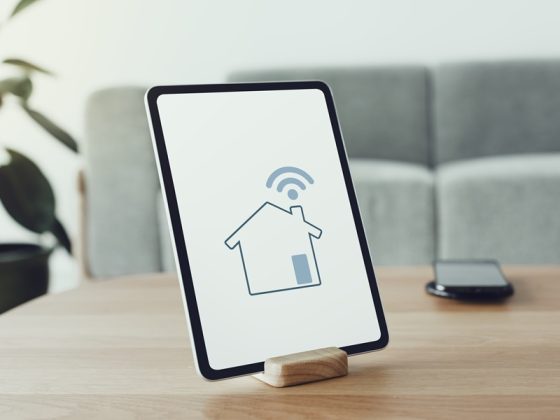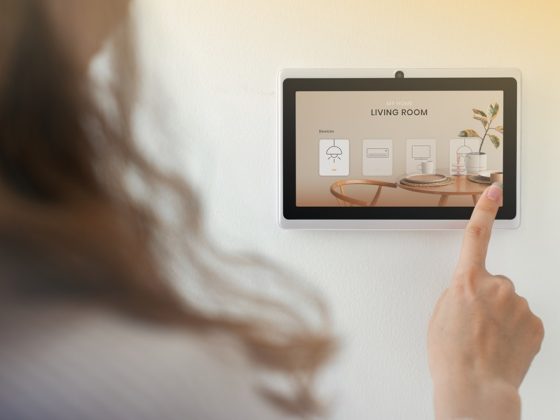Drones, or unmanned aerial vehicles (UAVs), have rapidly evolved from military tools to versatile assets with a wide range of applications. Their ability to capture high-resolution imagery, collect real-time data, and operate in challenging environments makes them invaluable in various sectors. Drones in disaster management have become essential for improving response times, assessing damage, and delivering aid. By leveraging advanced technology, drones in disaster management are revolutionizing how we handle emergencies, enhancing efficiency and effectiveness in crisis situations.
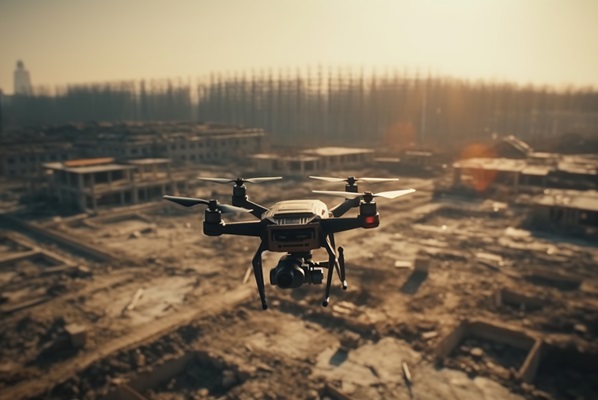
I. Introduction
A. Overview of Disaster Management and the Growing Need for Advanced Solutions
Disaster management has always been a critical concern for governments, humanitarian organizations, and emergency response teams. From natural disasters like earthquakes, hurricanes, and wildfires to man-made crises such as terrorist attacks and industrial accidents, rapid and efficient disaster management is paramount. However, traditional disaster response methods often face numerous challenges, including delays in accessing affected areas, logistical hurdles, and risks to the safety of first responders. The growing frequency and severity of disasters highlight the urgent need for advanced solutions to enhance the effectiveness of disaster management.
B. Introduction to Drones in Disaster Relief
Drones, or unmanned aerial vehicles (UAVs), have emerged as a powerful tool in disaster management, offering new possibilities for overcoming the limitations of traditional methods. Initially developed for military use, drones have evolved significantly over the past decade, finding applications in various sectors, including disaster relief. With advancements in technology, drones have become more accessible, and capable of performing a wide range of tasks such as aerial surveillance, damage assessment, search and rescue, and delivering essential supplies. Integrating drones in disaster management transforms how emergency responses are conducted, improving speed, efficiency, and safety.
C. Objectives of the Article
This article aims to explore the critical role of drones in disaster management by examining their various applications, benefits, and future potential. By delving into case studies and technological advancements, we will demonstrate how drones are revolutionizing disaster relief efforts, enhancing the ability of responders to save lives and mitigate damage. Furthermore, we will address the challenges and limitations that need to be overcome to fully realize the potential of drones in disaster management.
II. Types of Drones Used in Disaster Management
A. Aerial Surveillance Drones
One of the most widely used applications of drones in disaster management is aerial surveillance. These drones are equipped with high-definition cameras and sensors that provide real-time data collection, enabling responders to monitor disaster zones from a safe distance. Aerial surveillance drones are particularly useful in mapping affected areas, identifying hazards, and assessing the scope of the damage. Their ability to cover large areas quickly and accurately makes them invaluable in disaster scenarios where time is of the essence.
B. Delivery Drones
Delivery drones play a crucial role in providing emergency supplies to disaster-stricken areas, especially those that are inaccessible by traditional means. These drones are designed with payload capacities and GPS navigation systems that allow them to transport medical supplies, food, and essential equipment to affected populations. In disaster management, delivery drones have proven to be a lifeline for communities cut off from roads and infrastructure, ensuring that aid reaches those in need on time.
C. Search and Rescue Drones
Search and rescue operations often face significant challenges, particularly in locating survivors in hard-to-reach areas. Search and rescue drones are equipped with advanced features such as infrared cameras, thermal imaging, and GPS tracking that enable them to detect heat signatures and locate individuals trapped under debris or in isolated areas. These drones have been instrumental in disaster management by reducing the time it takes to find survivors and supporting rescue teams in their efforts to save lives.
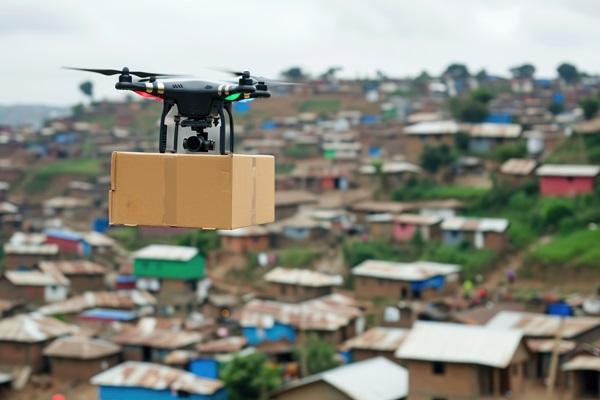
III. Applications of Drones in Disaster Management
A. Disaster Risk Assessment and Preparedness
Drones in disaster management are increasingly being used for disaster risk assessment and preparedness. By conducting pre-disaster monitoring and data collection, drones can help identify potential hazards and map high-risk areas. This information is critical in developing effective disaster preparedness strategies, allowing authorities to allocate resources more efficiently and reduce the impact of future disasters.
B. Rapid Damage Assessment
In the aftermath of a disaster, rapid damage assessment is essential for allocating resources and prioritizing relief efforts. Drones in disaster management offer a unique advantage in this regard, as they can quickly conduct aerial surveys and generate 3D maps of affected areas. This capability significantly reduces the time it takes to assess damage, enabling responders to make informed decisions and expedite the recovery process.
C. Search and Rescue Operations
One of the most significant applications of drones in disaster management is their use in search and rescue operations. Drones equipped with thermal sensors and infrared cameras can identify trapped or missing individuals, even in challenging environments such as collapsed buildings or dense forests. By providing real-time data to rescue teams, drones enhance the effectiveness of search and rescue efforts and increase the chances of saving lives.
D. Delivery of Aid and Medical Supplies
In disaster-stricken areas where traditional logistics are disrupted, drones in disaster management provide a reliable solution for delivering aid and medical supplies. Drones can quickly transport medicine, food, and relief packages to isolated or inaccessible areas, ensuring that essential supplies reach those in need. This application is particularly valuable in situations where roads are blocked or infrastructure is damaged, allowing for the rapid distribution of aid.
E. Communication and Connectivity
In many disaster scenarios, communication networks are often compromised, making it difficult for responders to coordinate relief efforts. Drones in disaster management can be used to establish temporary communication networks by providing Wi-Fi and cellular coverage to affected areas. This capability enables responders to communicate with each other and with affected populations, facilitating more effective disaster management and recovery efforts.
IV. Case Studies of Drones in Action
A. Earthquake Relief Efforts
Drones in disaster management have been used extensively in earthquake relief efforts, particularly in countries like Haiti and Nepal. In both cases, drones played a vital role in providing aerial surveys of the damage, identifying areas in need of assistance, and delivering essential supplies. The use of drones allowed for faster and more accurate assessments, improving the overall efficiency of the relief efforts.
B. Hurricane Response
Hurricanes often cause widespread destruction, making it difficult for responders to access affected areas. During Hurricane Harvey, drones were deployed to assess the damage, locate stranded individuals, and deliver emergency supplies. Drones in disaster management proved to be a critical asset in these operations, providing real-time data that helped responders allocate resources more effectively.
C. Wildfire Management
In recent years, drones in disaster management have played a significant role in wildfire management, particularly in monitoring and controlling wildfires in California. Drones equipped with heat sensors and thermal imaging technology have been used to map fire perimeters, identify hotspots, and assist firefighters in their efforts to contain the flames. This application has improved the safety and effectiveness of wildfire response efforts.
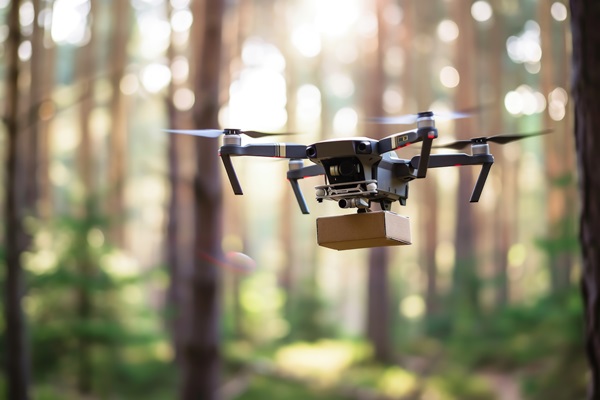
V. Benefits of Using Drones in Disaster Management
A. Speed and Efficiency
One of the most significant advantages of using drones in disaster management is their speed and efficiency. Drones can quickly reach disaster zones, conduct surveys, and deliver supplies, reducing the time it takes to respond to emergencies. Their ability to cover large and inaccessible areas makes them a valuable asset in disaster management, allowing for more rapid and effective relief efforts.
B. Safety and Risk Reduction
Drones in disaster management also enhance safety by reducing the need for human involvement in dangerous situations. By performing tasks such as aerial surveillance, damage assessment, and search and rescue, drones minimize the risks faced by first responders and relief workers. This technology allows for more efficient disaster management while ensuring the safety of those involved in the response efforts.
C. Cost-Effectiveness
Compared to traditional methods such as helicopters and manned aircraft, drones in disaster management offer a more cost-effective solution. Drones are less expensive to operate and maintain, making them a scalable option for a wide range of disaster scenarios. Their cost-effectiveness, combined with their versatility, makes drones an attractive tool for disaster management.
D. Precision and Accuracy
Drones in disaster management provide high-resolution data and real-time insights, allowing for improved accuracy in resource allocation and planning. The precision offered by drones ensures that relief efforts are targeted and efficient, minimizing waste and maximizing impact.
VI. Challenges and Limitations of Drone Technology
A. Regulatory and Legal Constraints
Despite the many benefits of drones in disaster management, there are several challenges to their widespread adoption. One of the primary obstacles is the regulatory and legal constraints surrounding drone use. Airspace restrictions, licensing requirements, and compliance with local and international laws can limit the deployment of drones in disaster scenarios. Clear regulations and guidelines are needed to facilitate the safe and effective use of drones in disaster management.
B. Technical and Operational Limitations
Drones in disaster management also face technical and operational limitations, such as battery life and flight duration constraints. Environmental factors, such as weather conditions, can also impact drone performance, limiting their effectiveness in certain disaster scenarios. Overcoming these limitations will require continued advancements in drone technology and innovation.
C. Data Privacy and Ethical Considerations
The use of drones in disaster management raises important questions about data privacy and ethics. Managing data security and ensuring that the privacy of affected populations is respected are critical concerns that must be addressed. Additionally, the use of drones for surveillance purposes during disasters can raise ethical issues, particularly when it comes to monitoring individuals without their consent.
VII. Future Trends and Innovations in Drone-Based Disaster Relief
A. Advances in Drone Technology
The future of drones in disaster management is promising, with ongoing advancements in drone technology. Developments in longer-range drones, AI integration, and autonomous flight systems are expected to enhance the capabilities of drones in disaster management. Swarm technology, where multiple drones work together to coordinate efforts, is also being explored as a potential solution for large-scale disaster scenarios.
B. Enhanced Collaboration with AI and Machine Learning
AI and machine learning are expected to play an increasingly important role in drone-based disaster management. By leveraging AI for real-time decision-making and resource management, drones will become even more effective in responding to disasters. This collaboration will enable more precise and efficient disaster management, further improving outcomes for affected populations.
C. Expanding Use Cases and Global Adoption
As drone technology continues to evolve, the use of drones in disaster management is expected to expand globally. Developing countries, in particular, are likely to benefit from the adoption of drone technology.
